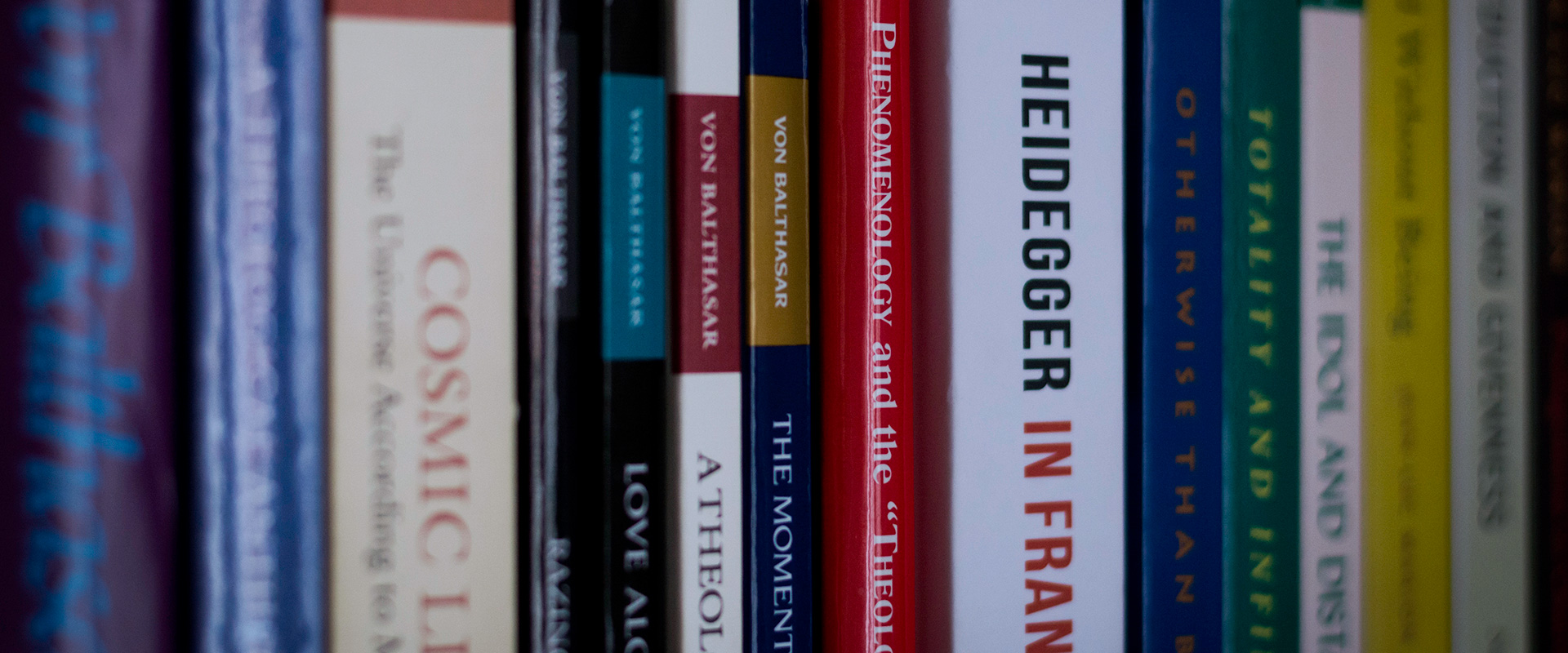Pathways
19th Century | 20th Century | Ethics & Morality | Art | Literature

19th Century | 20th Century | Ethics & Morality | Art | Literature
As well as authors of the neo-Scholastic revival, the student examines the various projects of such nineteenth-century Catholic thinkers as Chateaubriand, Schlegel, Ravaisson, Rosmini, Blondel, and Newman, all of whom stood in relations of creative tension with the Scholastic approach of the time.
The fundamental confrontation of theology with history in the nineteenth and early twentieth centuries is traced through such protagonists as Newman, Marín-Sola, Blondel, Rousselot, and de Lubac. Our guiding questions are: What does it mean to say that Christianity is an historical religion? How can history mediate the eternal truth of the Gospel? What are the scope and limits of doctrinal development?
Twentieth-century Catholic thought encompasses Maritain and Gilson’s existential Thomism, Heidegger’s departure from neo-Scholasticism, Gadamer’s ‘hermeneutics of tradition’, Rahner’s transcendental anthropology, Balthasar’s ‘metaphysics of love’, Augusto Del Noce’s ‘Catholic modernity’, Elizabeth Anscombe’s action theory and virtue ethics, René Girard’s mimetic theory, Charles Taylor’s critique of rationalist epistemology, Robert Sokolowski’s ‘theology of disclosure’, ressourcement Thomism, and the ‘theological turn’ imparted to French phenomenology by Emmanuel Lévinas, Jean-Luc Marion, Jean-Yves Lacoste, Michel Henry, Jean Chrétien, and the new generation of Claude Romano and Emmanuel Falque.
We examine the twentieth-century theological projects of Congar, de Lubac, Rahner, Lonergan, von Balthasar, Wojtyla, and Ratzinger with the intent of discerning the explicit and implicit philosophical commitments that underlie their theological thinking.
The study of practical philosophy is customarily approached through ethics alone. But, as Aristotle saw, praxis is comprised of an inherent political dimension, as well. We look at such cases of the influence of philosophy and theology on politics as the impact of phenomenology on social renewal in Central Europe (Husserl, Scheler, Patočka, Wojtyla); the elaboration of Christian democracy in the reconstruction of the West after World War II (Maritain, Simon, De Koninck); contemporary Catholic interrogations of culture, liberalism, and modernity (MacIntyre, Taylor, Caldecott; Manent, Bénéton, Besançon, Delsol, Brague, Nemo).
No program working within the Christian humanist tradition would be complete without a study of theological aesthetics in Christian art and architecture. Familiarity with the history of Christian art, from the catacombs to the great religious painters of the twentieth century, will equip students to face the question: what kind of images and spaces will draw men and women today to the mystery of Christ and his Church? What kind of art can sustain an encounter with the divine? Jean-Luc Marion’s distinction between the ‘idol’ and the ‘icon’ (particularly in The Crossing of the Visible) will guide our inquiry as we examine some of the monuments of Christian art.
Our students study Shakespeare, who arguably gives us not only a late mediaeval, but an enduringly Catholic understanding of humanity. They also encounter recent novelists and poets who, with imaginative genius, work out Catholic truth in explorations of the circumstances in which contemporary men and women live: Fyodor Dostoevsky, Vladimir Solovyov, Gerard Manley Hopkins, Coventry Patmore, Francis Thompson, G.K. Chesterton, Evelyn Waugh, Léon Bloy, Paul Claudel, Charles Péguy, Georges Bernanos, Gertrud von Le Fort, Reinhold Schneider, Sigrid Undset, José Maria Gironella, Eugenio Corti, Flannery O’Connor, and Walker Percy.